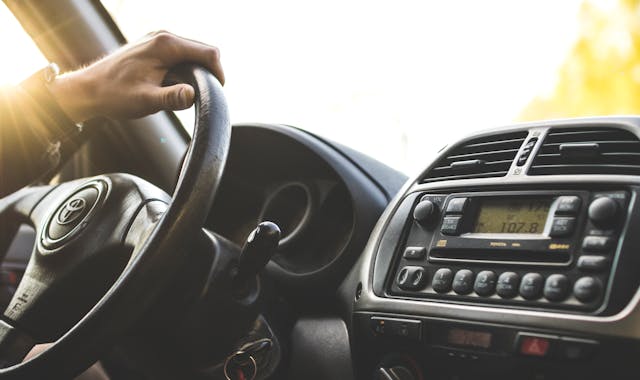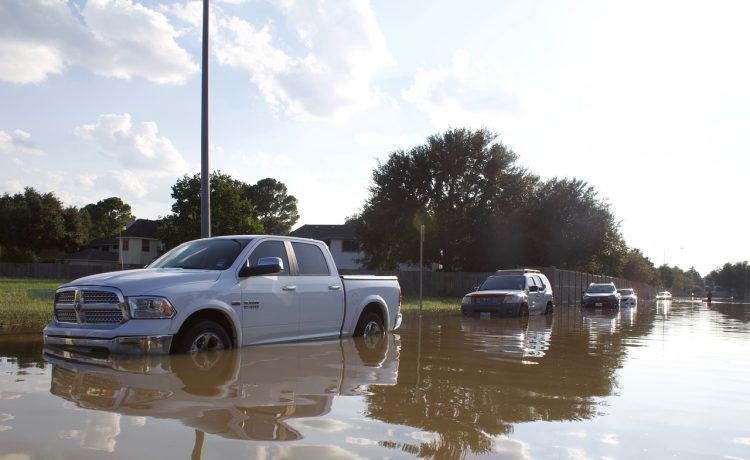Are you interested in buying a car for parts? Whether you’re a car enthusiast, a DIY mechanic, or a budget-conscious individual looking for affordable options, this comprehensive guide is here to help. In this article, we’ll provide you with step-by-step instructions, insider tips, and essential techniques to make your car buying experience for parts smooth and successful.
Car enthusiasts may purchase cars for parts to restore, customize, or upgrade their vehicles, using salvaged parts to enhance performance, aesthetics, or functionality.
DIY mechanics may buy cars for parts to repair or replace damaged components in their own vehicles or as a cost-effective way to source parts for repair jobs.
Budget-conscious individuals may opt to buy cars for parts as an affordable alternative to purchasing brand new parts from dealerships, helping them save money while still obtaining the necessary components for their vehicle repairs or upgrades.
Additionally, some individuals may buy cars for parts to engage in sustainable practices, such as repurposing salvageable parts to reduce waste and promote eco-friendly automotive practices.
Overall, buying cars for parts is a popular option for those seeking to save money, customize their vehicles, repair or upgrade their cars, or engage in sustainable automotive practices.
Discover where to buy cars for parts and how to unlock maximum savings while ensuring quality and compatibility for your project. Let’s dive in and demystify the process of how to buy a car for parts!
5 reasons to buy cars for parts
buying a car for parts can offer significant cost savings, access to rare or discontinued parts, customization and upgrade opportunities, options for repairing or replacing damaged components, and support for sustainable automotive practices. It can be a practical and cost-effective solution for car enthusiasts, DIY mechanics, budget-conscious individuals, and those interested in eco-friendly practices.
Cost savings
One of the primary reasons people choose to buy cars for parts is the potential for significant cost savings. buying salvage cars for parts can often be much more affordable than buying new parts from a dealership. This can be especially beneficial for budget-conscious individuals or DIY mechanics looking to save on repair or upgrade costs, while they still can sell the car they bought for the same amount after they take the parts they need.
Availability of rare or discontinued parts
Some cars may have rare or discontinued parts that are difficult to find in the market. Buying a car for parts can be a viable option to source these hard-to-find components, especially for vintage or classic vehicles. It allows car enthusiasts or collectors to obtain the necessary parts for restoration or customization projects that may not be readily available elsewhere.
Customization and upgrades
Buying a car for parts provides an opportunity to customize or upgrade a vehicle. Salvaged parts can be used to enhance the performance, aesthetics, or functionality of a car, allowing owners to create a unique and personalized vehicle that suits their specific preferences or needs. This can be particularly appealing to car enthusiasts or those looking to add aftermarket modifications to their vehicles.
Repair and replacement of damaged components
Another common reason to buy a car for parts is to repair or replace damaged components in a vehicle. Salvaged parts can be a cost-effective solution for fixing a damaged car, especially if the original manufacturer parts are expensive or hard to find. This can be particularly beneficial for DIY mechanics or individuals with mechanical skills who can perform their own repairs.
Sustainable and eco-friendly practices
Buying a car for parts can also be an environmentally conscious choice. Salvaging and reusing parts from a car being sold for parts can reduce waste and promote sustainable automotive practices. By giving new life to salvageable components, it helps reduce the environmental impact of producing new parts and promotes recycling and upcycling practices in the automotive industry.
Where to find cars for parts?
When it comes to buying cars for parts, there are several options available to consider.
One popular option is to explore online auto auctions, with bidexport.com being a prominent player in the market. Bidexport.com auto auction offers a convenient and accessible platform for purchasing vehicles for parts.
Bidexport.com is a reputable online auto auction platform that specializes in salvage and used vehicles. They provide a wide range of options, including cars, trucks, SUVs, motorcycles, and more, from various makes and models. Their inventory includes vehicles with varying degrees of damage, ranging from slightly damaged to heavily damaged or salvage title vehicles.
One of the advantages of using bidexport.com for buying cars for parts is the convenience and accessibility of their online platform. Bidders can easily browse through their extensive inventory, view detailed vehicle information, photos, and even conduct car inspections. Bidexport.com also provides a user-friendly bidding process, allowing potential buyers to place bids online and participate in live auctions from the comfort of their own home or office with a potential for saving even more money than when buying cars for parts from junk yards.
In addition to online auto auctions, there are other options for buying cars for parts, such as local salvage yards, junkyards, or auto dismantlers. These physical locations may offer salvage or used vehicles for sale, and buyers can visit them in person to inspect the vehicles and negotiate prices. However, compared to online auto auctions, physical locations may have limitations in terms of inventory selection, convenience, and accessibility.
It’s important to note that when buying salvage cars for parts, buyers should exercise caution and thoroughly research the vehicles’ condition, history, and legal requirements. It’s advisable to carefully review the vehicle’s title status, damage extent, and any potential issues before making a purchase. Additionally, buyers should be familiar with the specific regulations and requirements in their local area or country regarding salvage vehicles and parts.
In conclusion, bidexport.com auto auction is a reputable online platform that offers a convenient and accessible option for buying cars for parts. However, it’s essential to thoroughly research and consider all options and legal requirements when purchasing salvage or used vehicles for parts, whether through online auto auctions or other sources.

How to buy cars for parts step by step – Insider secrets for a successful purchase.
When it comes to automotive repairs, upgrades, or customization projects, buying a car for parts can be a smart and cost-effective solution. With the right knowledge and approach, it’s possible to unlock the secrets to successful car buying for parts, and gain access to a treasure trove of components that can be repurposed for various purposes. In this article, we will provide a step-by-step guide to make buying a car for parts easy and hassle-free.
Step 1: Research and Identify Potential Sources
The first step in successful car buying for parts is to research and identify potential sources. This may include salvage yards, auto auctions, classified ads, online marketplaces, or private sellers. Take the time to thoroughly research and evaluate each source to ensure their credibility, reputation, and reliability. Look for reviews, ratings, and testimonials from previous buyers to gauge their legitimacy and trustworthiness.
Step 2: Set a Budget and Stick to It
Before purchasing a car for parts, it’s crucial to set a budget and stick to it. Determine how much you can afford to spend on the vehicle, as well as the potential costs for towing, transportation, and any additional fees. Keep in mind that you may also need to allocate funds for potential repairs or restoration of the salvaged components. Setting a budget and adhering to it will help you avoid overspending and ensure a successful and cost-effective purchase.
Step 3: Inspect the Vehicle Thoroughly
When buying a car for parts, it’s essential to thoroughly inspect the vehicle to determine its condition and the quality of the components. Conduct a visual inspection of the exterior, interior, and undercarriage for any signs of damage, rust, or wear. Check the engine, transmission, suspension, brakes, electrical system, and other key components to assess their condition and functionality. If possible, bring along a trusted mechanic or someone with expertise in automotive repairs to help you assess the vehicle’s condition accurately.
Step 4: Verify the Vehicle’s History
Verifying the vehicle’s history is crucial in successful car buying for parts. Request the vehicle’s history report, which includes information about its previous owners, accident history, title status, and maintenance records. This will help you identify any potential red flags or issues that may affect the quality or value of the salvaged components. A thorough vehicle history check will provide you with valuable insights and ensure a wise investment.
Step 5: Negotiate and Finalize the Purchase
Once you have thoroughly inspected the vehicle and verified its history, it’s time to negotiate the purchase price and finalize the transaction. Be prepared to negotiate with the seller and try to secure the best possible price for the vehicle. Keep in mind that salvaged vehicles are typically sold at a lower price due to their condition, so negotiating is an essential step in successful car buying for parts. Once the purchase price has been agreed upon, ensure that all necessary paperwork, including the title transfer, is completed according to local regulations and laws.
Step 6: Transport and Disassemble the Vehicle
After finalizing the purchase, you will need to transport the salvaged vehicle to your desired location for disassembly. Depending on the vehicle’s condition and the location of the purchase, you may need to arrange for transportation or towing services. Once the vehicle is in your possession, carefully disassemble the components you need, following proper safety procedures and using the right tools. Take note of the condition and functionality of each salvaged component, and organize them for future use or storage.
Step 7: Utilize the Salvaged Components
The final step in successful car buying for parts is to utilize the salvaged components for your intended purpose. Whether it’s for repairing your own vehicle, upgrading your car with aftermarket parts, or using them for a customization project, make sure to carefully install or integrate the salvaged components according to manufacturer specifications and best practices. Regularly inspect and maintain the salvaged components to ensure their optimal performance and longevity. By utilizing the salvaged components effectively, you can maximize your budget and save money compared to purchasing brand new components from a dealership or other sources.
Step 8: Resell the rest of the car
Additionally, another potential benefit of buying a car for parts is the opportunity to resell the remaining components that were not utilized. Even if you purchased the car at the full price, you can still recoup some of your investment by selling off the parts that are in good condition and have market demand. This can further offset the initial cost of the car, potentially resulting in a higher return on investment. Properly pricing and marketing the remaining components can help you maximize your potential profit and make your car buying for parts venture even more financially rewarding.
In conclusion, buying a car for parts can be a smart investment for those who are knowledgeable about automotive repairs and have the skills to disassemble and utilize salvaged components
Different types of cars you can buy for parts
When it comes for buying cars for parts there are different options you can consider for your different purpose of buying:
Crashed cars
These are vehicles that have been involved in accidents and deemed too damaged or uneconomical to repair. Crashed cars can be a good source of parts, especially for body and interior components.
Junk cars
These are vehicles that are no longer operational or have reached the end of their useful life. They may have mechanical issues or extensive wear and tear. Junk cars can provide valuable parts for repairs or restorations.
Salvage cars
These are vehicles that have been declared as total losses by insurance companies due to damage from accidents, natural disasters, or other incidents. Salvage cars can offer a wide range of usable parts, including engines, transmissions, and more.
Abandoned cars
Abandoned cars are vehicles that have been abandoned by their owners and left unattended for an extended period of time. They can be a potential source of parts, depending on their condition and age.
Vintage or classic cars
These are older vehicles that are considered valuable due to their age, rarity, or historical significance. Vintage or classic cars can provide unique and hard-to-find parts for restoration projects or customization.
One Car, Multiple Possibilities: The Art of Salvaging Cars for Parts
If you’re a car enthusiast or a DIYer, you know that salvaging cars for parts can be an art form. It’s a way to repurpose and reuse components from damaged or retired vehicles, unlocking a world of possibilities. Whether you’re looking to restore a classic car, repair your own vehicle, or create a unique custom build, salvaging cars for parts offers endless opportunities to get creative and save money in the process.
Salvaging cars for parts is a rewarding endeavor that allows you to tap into the potential of a single vehicle and use its components for multiple purposes. From engines and transmissions to body panels, interiors, and electrical parts, salvaging cars for parts provides a treasure trove of resources for those who are willing to roll up their sleeves and get hands-on. With the right knowledge, tools, and a bit of patience, you can uncover hidden gems in salvaged vehicles and transform them into valuable assets for your automotive projects.
One of the benefits of salvaging cars for parts is the ability to source rare or hard-to-find components. Vintage cars or discontinued models often have parts that are no longer available in the market, making salvaging a viable solution for obtaining those elusive pieces. Salvaging cars for parts also allows you to save money, as used components are typically more affordable compared to buying new parts from original equipment manufacturers (OEMs). This can be especially beneficial when restoring a classic car or repairing a vehicle on a budget.
Another advantage of salvaging cars for parts is the opportunity to customize and personalize your project. Salvaged components can be used to create unique modifications, such as engine swaps, suspension upgrades, or custom interior designs. This allows you to tailor your project to your own preferences and create a one-of-a-kind vehicle that reflects your personality and style.
Salvaging cars for parts also contributes to sustainability and environmental conservation. By repurposing and reusing components from salvaged vehicles, you’re reducing the demand for new parts and minimizing the environmental impact of manufacturing processes. Salvaging cars for parts promotes a circular economy, where resources are efficiently utilized and waste is minimized, making it a greener and more eco-friendly approach to automotive repair and customization.
So, whether you’re a seasoned car enthusiast or a DIYer looking to embark on a new project, salvaging cars for parts offers endless possibilities. It’s an art form that allows you to unlock the hidden potential of a single vehicle and create something unique, while also promoting sustainability and saving money in the process. With the right knowledge, skills, and creativity, salvaging cars for parts can be a fulfilling and rewarding endeavor that opens up a world of automotive possibilities.
Get Answers to Your Top Questions: FAQs about Buying Cars for Parts
Q: Why should I consider buying a car for parts?
A: Buying a car for parts can be a cost-effective way to obtain specific components or parts that you need for repairs or upgrades on other vehicles. It can also be a financially rewarding venture, as you can potentially recoup some of your investment by selling off the remaining components.
Q: Where can I buy cars for parts?
A: There are several options for buying cars for parts, including salvage yards, auto auctions, online marketplaces, and private sellers. One popular online option is bidexport.com, an auto auction platform that offers a wide selection of salvage vehicles for parts.
Q: What should I look for when buying a car for parts?
A: When buying a car for parts, it’s important to thoroughly inspect the vehicle to assess its condition and determine the quality and usability of the components you need. Look for signs of damage, wear and tear, and rust, and ensure that the desired parts are intact and in good condition.
Q: Can I resell the remaining parts of the car I bought for parts?
A: Yes, depending on the condition and demand for the remaining components, you can potentially resell them to recoup some of your investment. Proper pricing and marketing can help you maximize your potential profit.
Q: What are the benefits of buying cars for parts over buying new parts from a dealership?
A: Buying cars for parts can often be more cost-effective compared to buying new parts from a dealership. It allows you to obtain used components at a potentially lower cost, and it can also be a sustainable option by recycling and repurposing parts from salvage vehicles.








